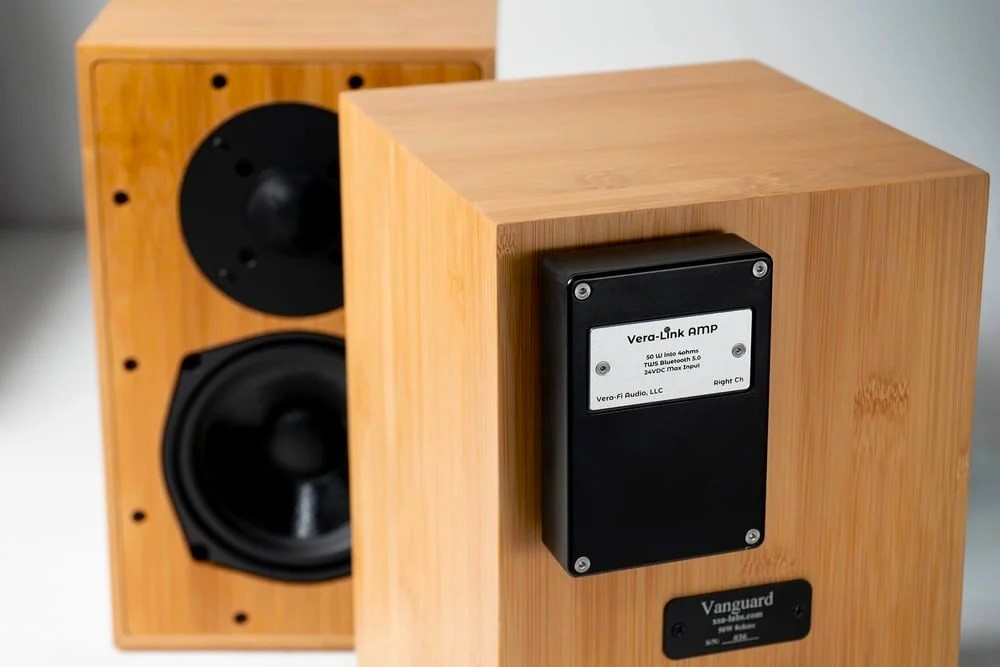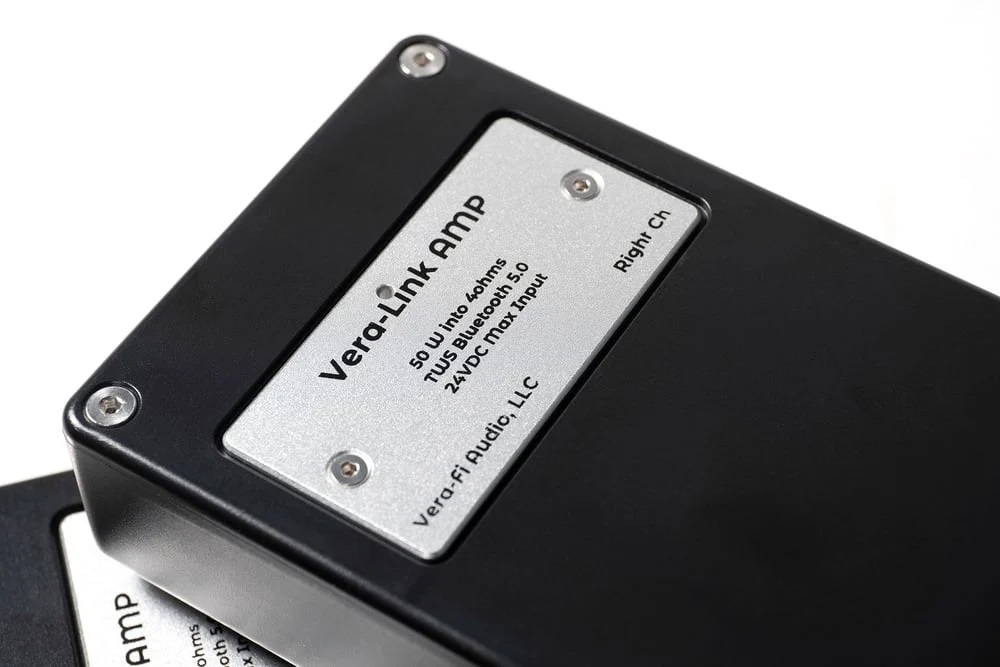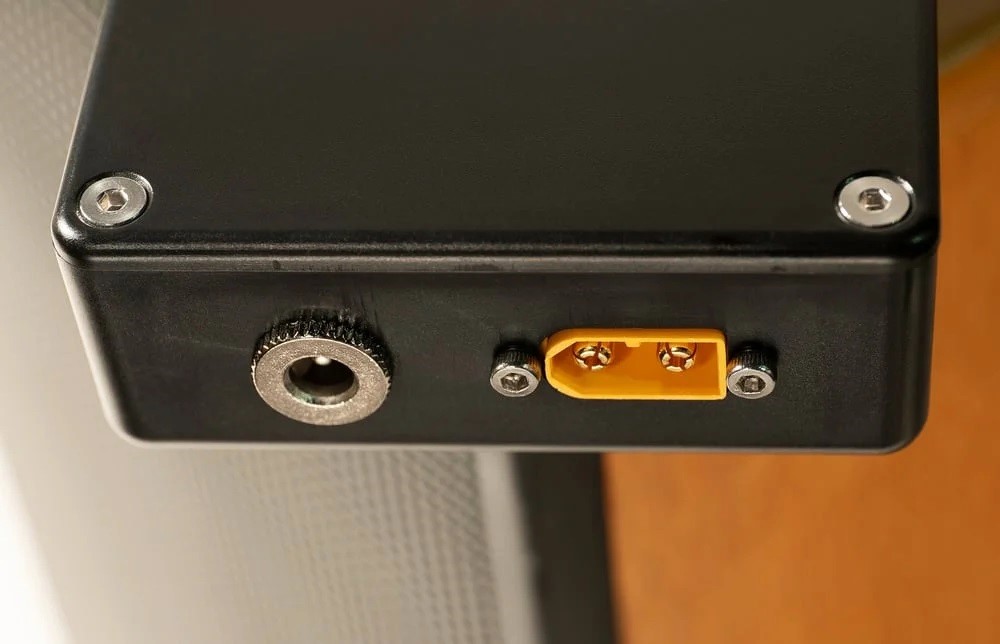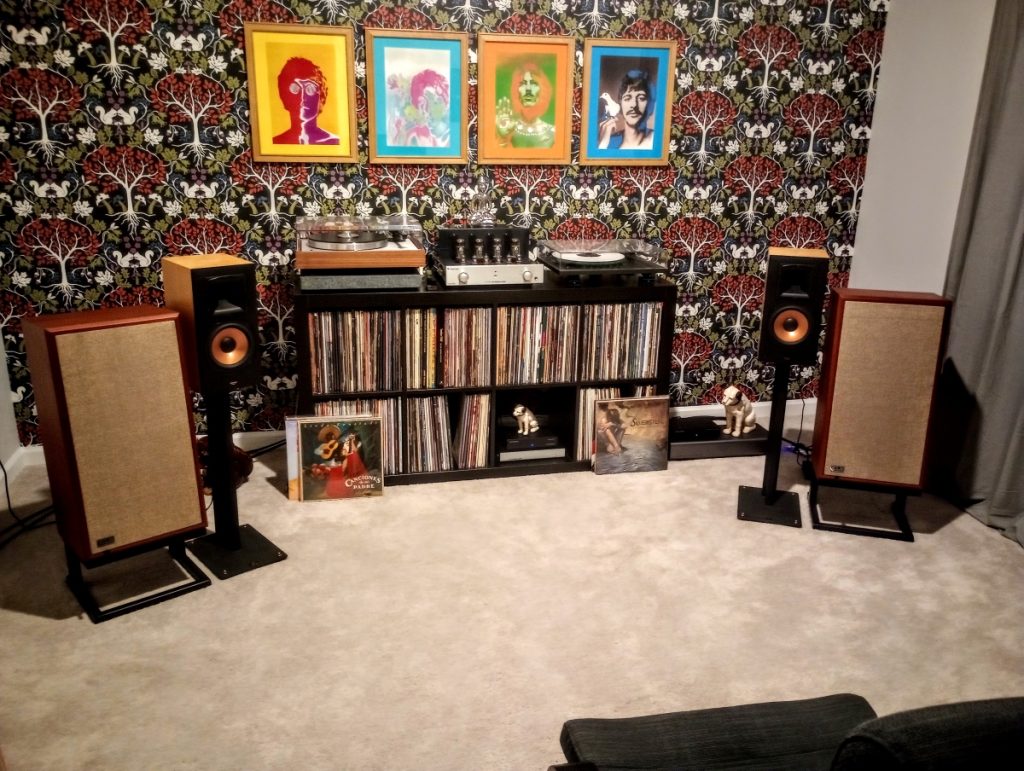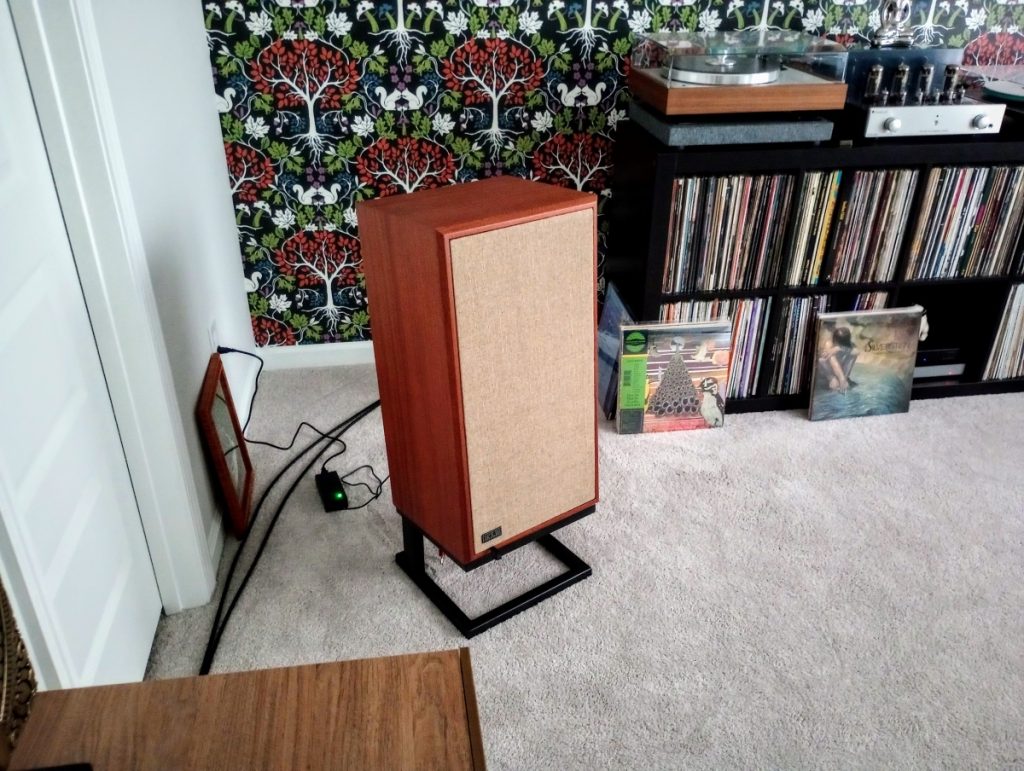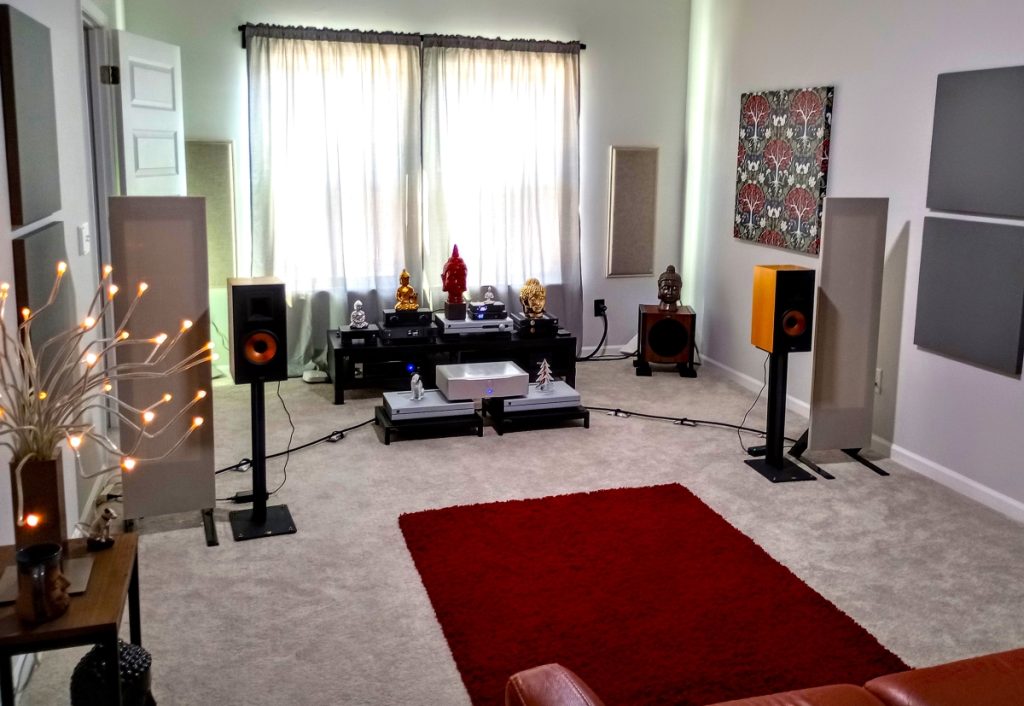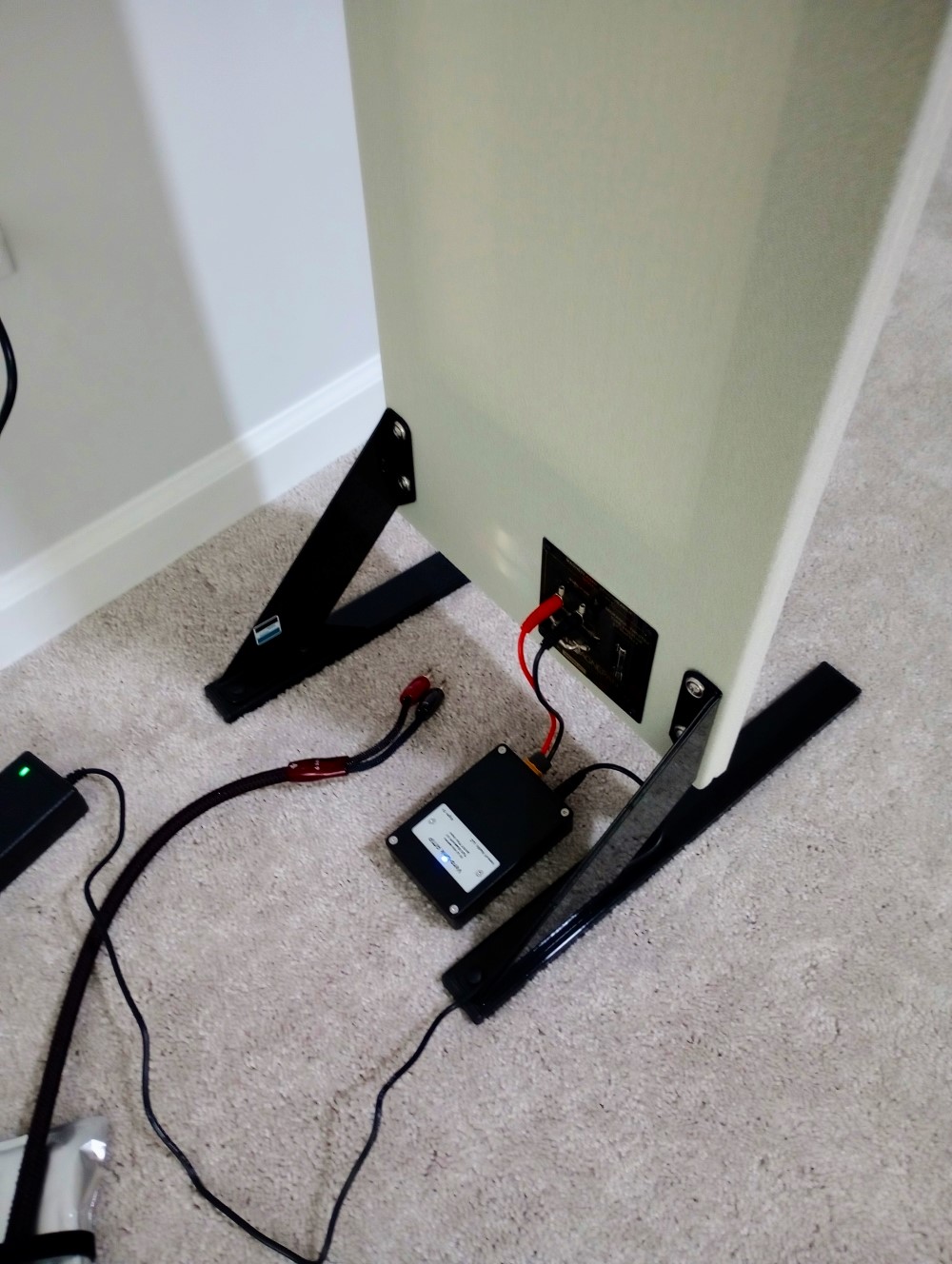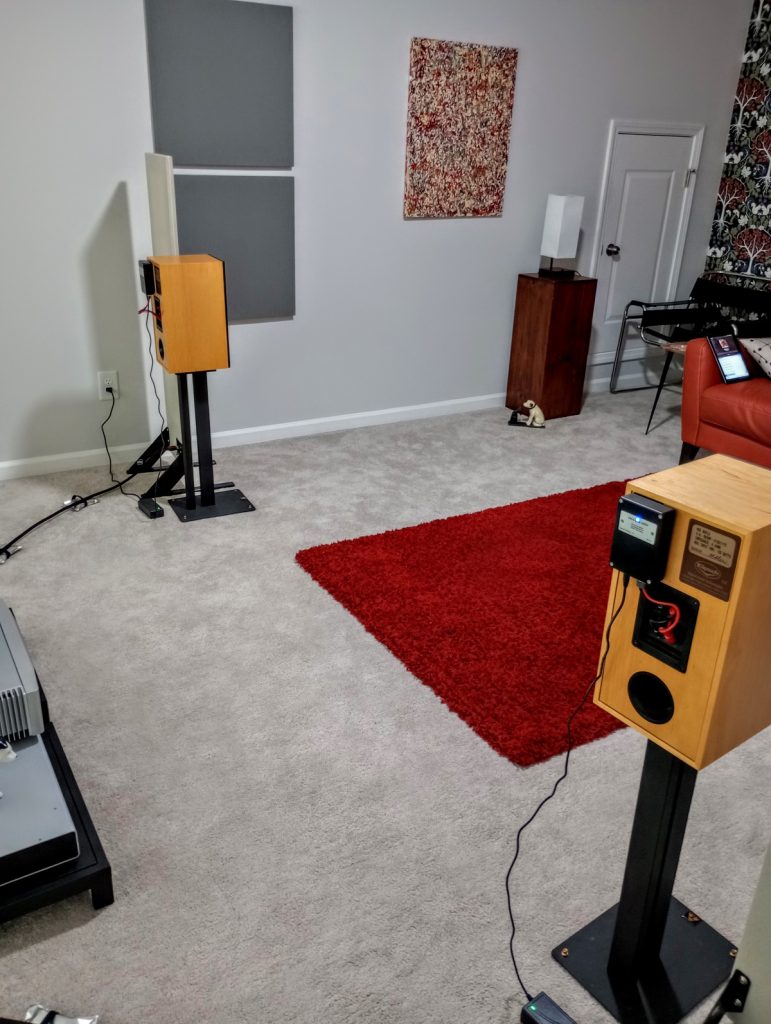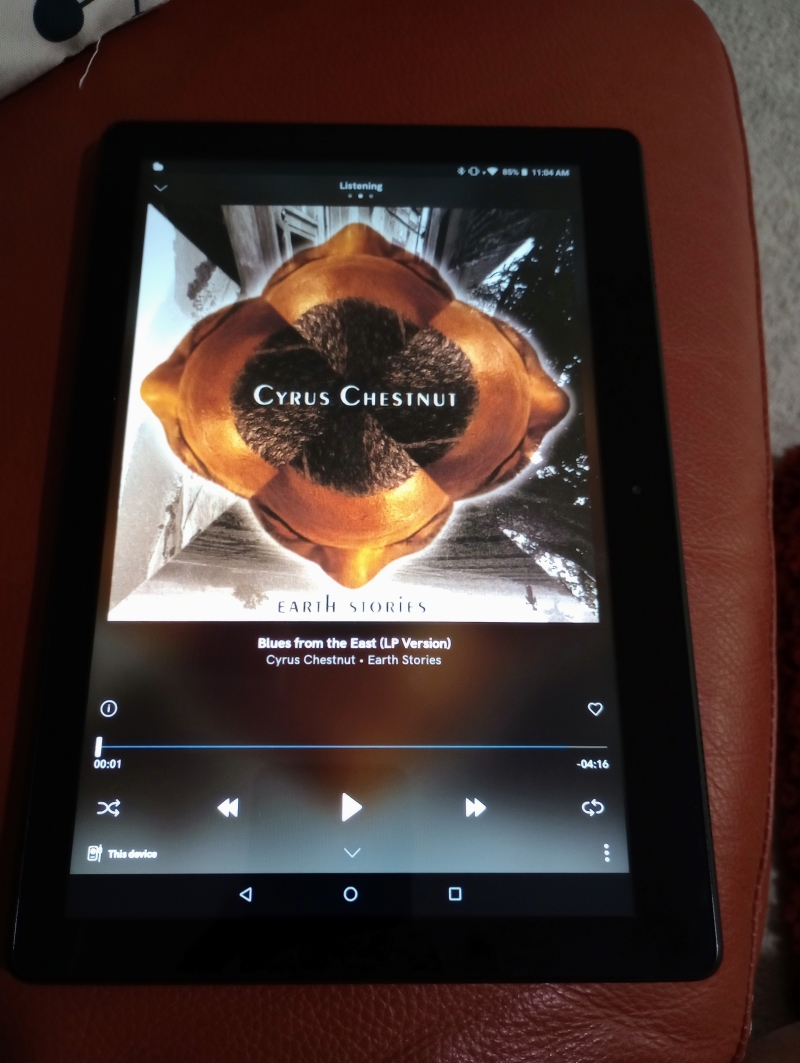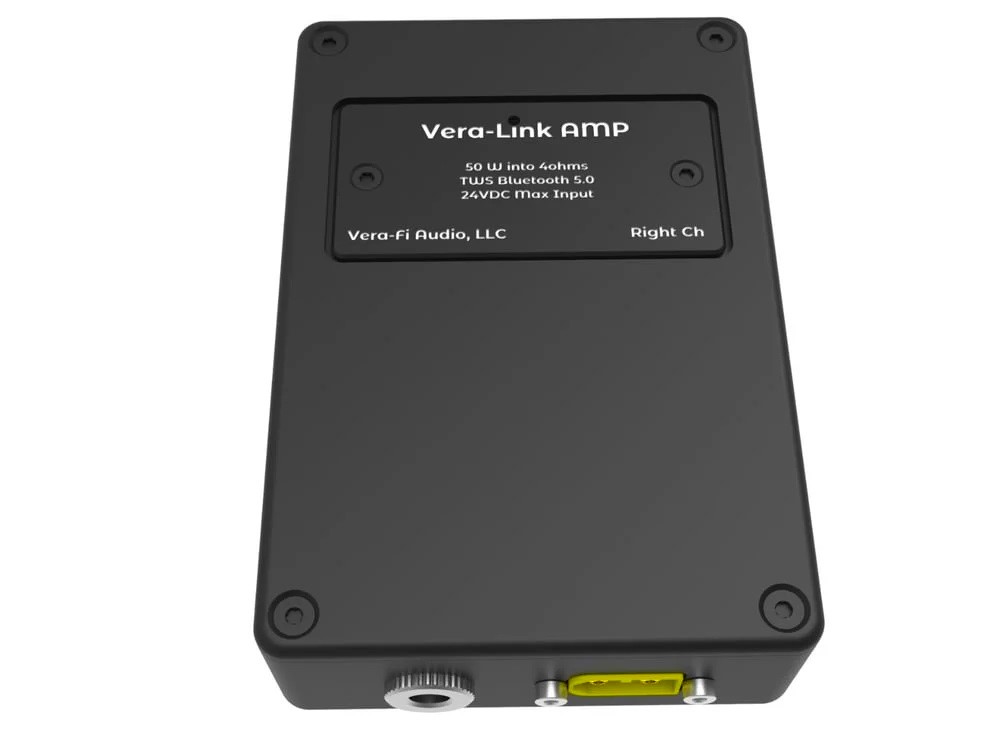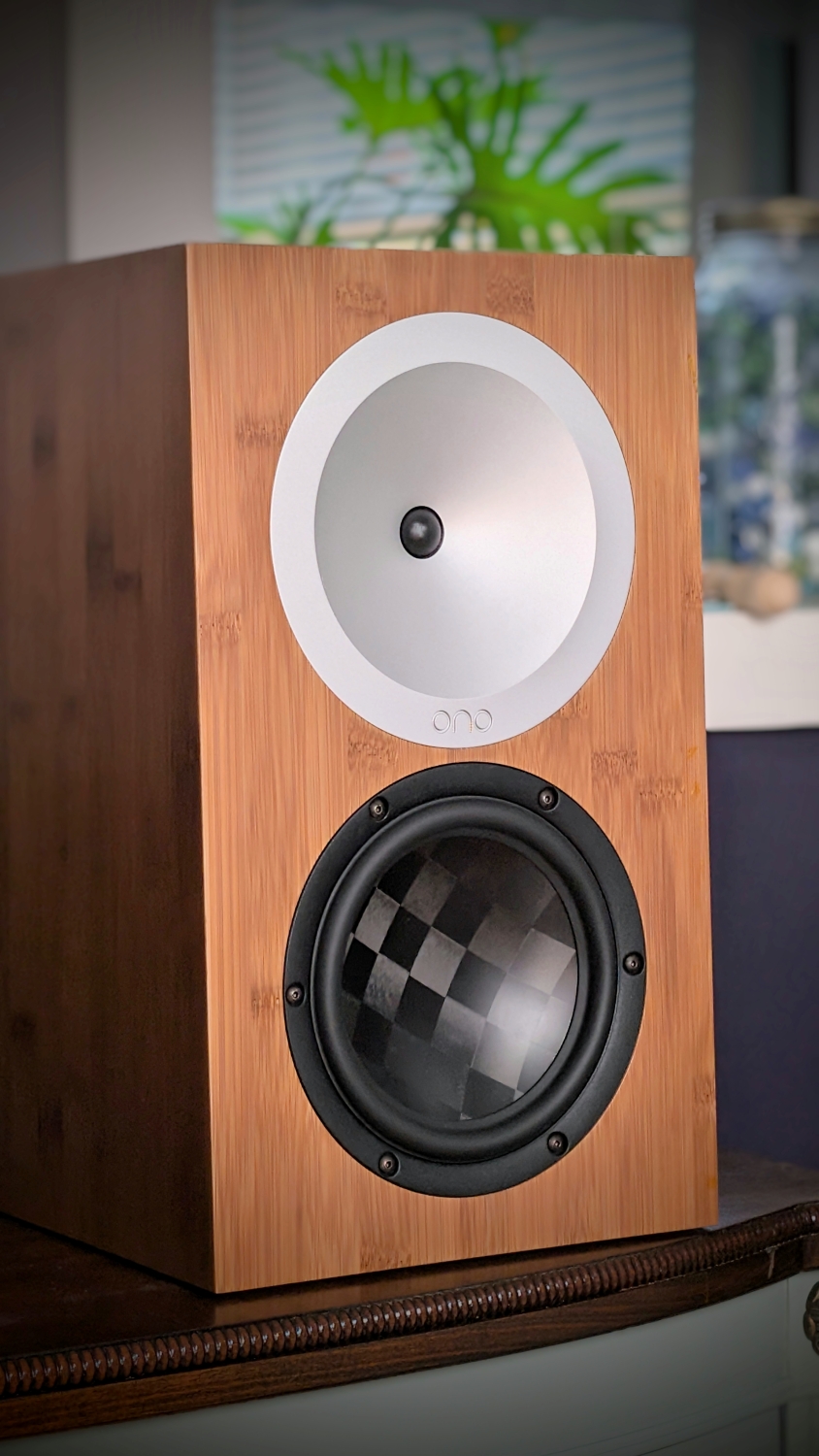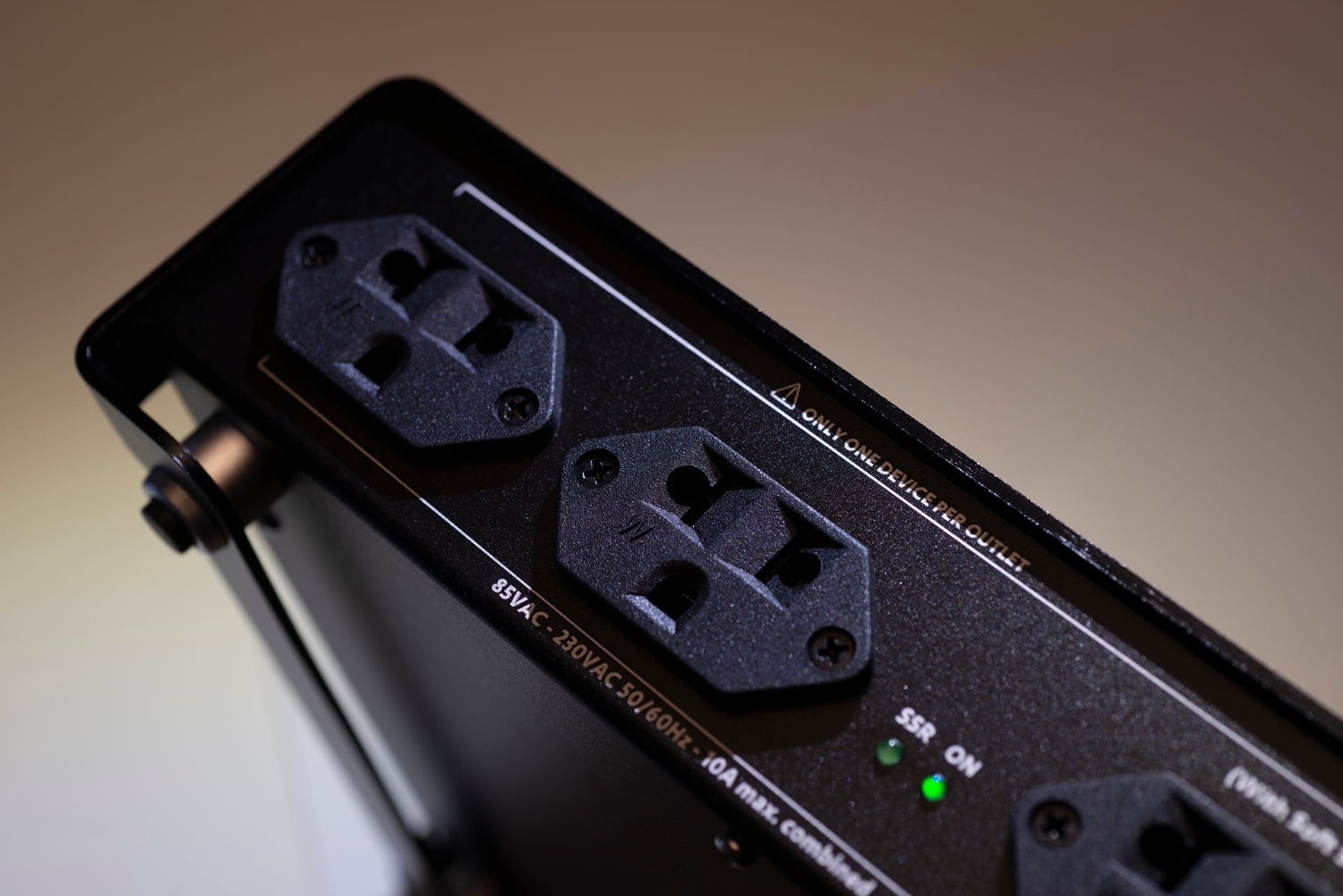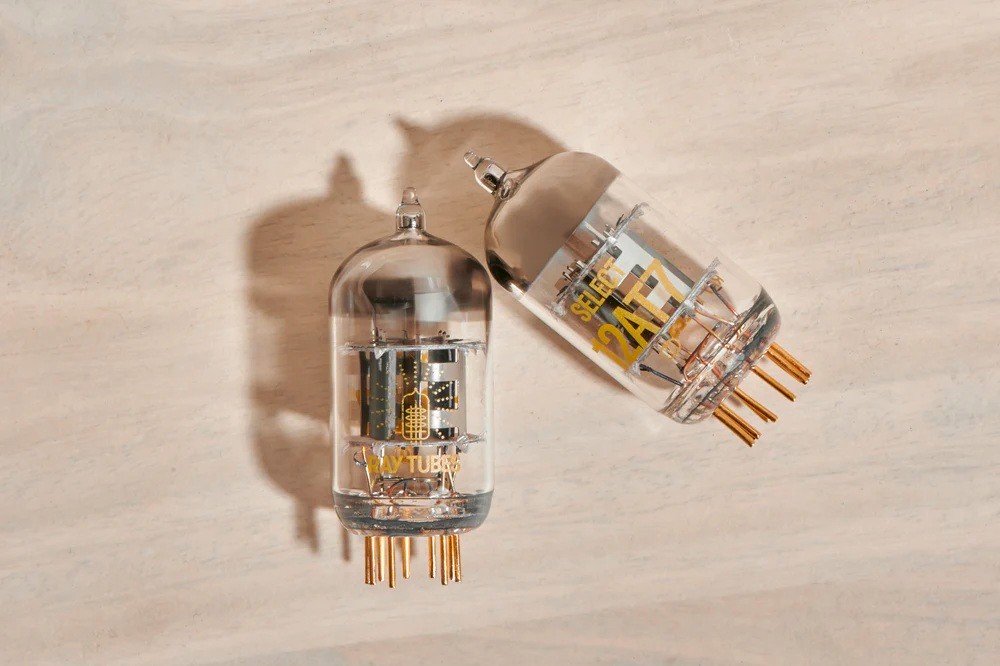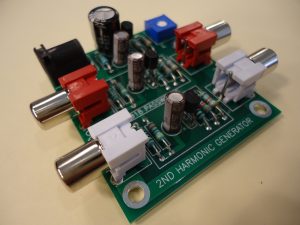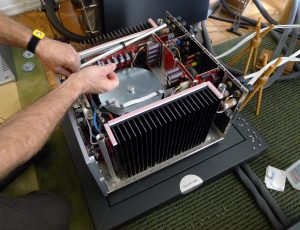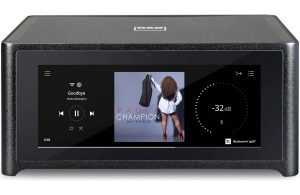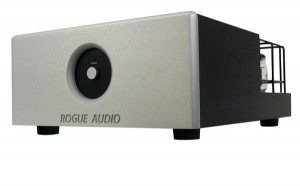Power to Drive Virtually Any Loudspeaker with Incredible Performance at a Ridiculously Low Price
I have a fairly constant presence on social media, particularly Facebook, and I belong to a number of audio-related groups there. So when I saw a post in one of them announcing the new Vera-Fi Audio Vera-Link Bluetooth Wireless Stereo Streaming Amplifiers, I didn't really give it much thought. My initial impression was kind of like…hmmmm. I'd seen posts from Vera-Fi Audio main man Mark Schifter before, and had some awareness of most everything in his product line, but hadn't seen anything that was currently pressing any of my buttons with regard to interest I might have in a review. That level of interest was piqued a couple of days later when Mark updated his posts about the Vera-Link with a link to a review of the new amps from Jeff Dorgay at Tone Audio. I know Jeff and generally consider his review findings to be pretty much spot on, and his rave for the Vera-Links definitely gave me pause to reflect on whether I might actually be interested in hearing them.
I have a fairly extensive level of experience with Bluetooth technology, but have almost always found it to be a bit lacking for a better choice of words. Many of the Bluetooth powered loudspeakers I've used in the past have sounded okay via Bluetooth, but most of them only really snapped into focus and offered superior sound quality with a wired connection with any source. And then, there was always Bluetooth's seeming inability to maintain a perfect signal in even the most unchallenging setups. A regular descriptor for me in many of my Bluetooth technology reviews was "half-baked implementation"—maybe my expectations were just too high.
I definitely did an about face when Bill Leebens reached out with a blast email promoting the Vera-Link amps; among the verbiage was a reference to previous products that Mark Schifter had been involved in, including the Audio Alchemy range of equipment. I had several Audio Alchemy pieces in my rig back in the day; they helped elevate my audio system to one with greater high-end pretensions. I had absolutely no idea of Mark's connection to the Audio Alchemy gear, but my positive experiences with them prompted me to immediately fire off my own email to him requesting a review pair of the Vera-Link amps. Mark responded enthusiastically, and my amps shipped the very same day.
The Vera-Link Amplifiers Arrive
In the days prior to the arrival of the Vera-Links, I'd been pondering over how to best implement them in a review setup. I had a mint-condition pair of Klipsch RB3 compact monitors that were a thrift store find for $10; they were one of Klipsch's first forays into marketing anything smaller than floorstanding horn arrays, and retailed for around $650 when brand new in the mid-90s. I'd paired them with tube amplification on several occasions at my old location in Georgia, and the sound quality was beyond superb. Here in South Carolina, they've been sitting in my audio storage closet for almost a year, but I really felt that with their high sensitivity, they'd be a perfect match for the Vera-Links. The RB3s needed jumpers for the bi-wire connectors, which I created from a small segment of an old pair of Monster M1 cables that were gathering dust.
When the Vera-Link amps arrived a few days later, they came in a very light and small package. It was even smaller than I would have imagined based on descriptions I'd read comparing the individual amps to "about the size of a pack of cigarettes." Despite their diminutive size, they seemed to be surprisingly well-built, and their power supplies were much beefier than the typical wall wart one might expect with this sort of product. And the proprietary connection cables between the amps and the loudspeakers were also really robust, offering a superb connection between the amps with heavy banana connectors at the speaker end. Based on my previous experience with Bluetooth devices, I was hoping that there'd also be an audio input jack as well, but the only connection jacks present were for power and speaker connections. Oh well, I guess we'll see how this progresses!
The following technical information was taken from Vera-Fi Audio's website:
"Vera-Link is built around the TI [Texas Instruments] TPA 3116—wireless stereo—true left and right channel and no wire in-between. Each [amp module] get[s] power from a local PSU to wall plug (or battery). [The] Bluetooth 5.0 standard [offers sound that's] like a wired connection in sound quality [and] connects easily and reliably from your smartphone [for] "Frustration-Free Wireless." Multiple paired sets can be used in [the] same home—5 available BT names [allow the user] to distinguish [between] different speakers. The TPA 3116 factory datasheet spec for 50W into 4 ohms and 25W into 8 ohms assumes a 21V dc PSU capable of the current needed for a 50W continuous power output. The amp is configured for parallel mono bridge tied load (BTL) operation mode which allows it to have [an] output voltage swing that[s] 2x the PSU voltage. The Vera-Link amp comes with a "desktop style" 24V PSU rated for 3A of continuous output (72W). There is an optional 12V 2A compact "wall wart" style PSU for those with lower power needs who require a more discreet and visually friendly white power supply to blend in with the home decor. The datasheet shows that at 24V supply the amp is capable of 60W into 4 ohms and 30W into 8 ohms at 1% THD+N. We are stating conservative specs of 50W and 25W onto 4 ohms and 8 ohms, respectively. [Which are] well within the capability of the external PSU."
That basically tells me that the Vera-Links are capable of nearly distortion-free power at their full rated output—that alone impresses the heck out of me for Class D amps. But I also regularly power my Magneplanars with PS Audio M700 Class D amps—and they'll also play at any sound pressure level without running out of gas either. Class D amplifiers—yeah! So let's have a listen!
Listening Tests
You can click on my name in the header above and see a list of the components in my two audio systems. Attaching the Vera-Link amps was a snap, and they were up and running in no time. The amps arrive with velcro strips factory applied to each unit; all that was necessary was to determine the correct location on the backside of the amp to where best attach them. Vera-Fi states that the Velcro strips can easily be removed with no damage to loudspeaker finishes, so it's a win-win in terms of convenience. I set up the Klipsch RB3 on a set of stands I keep around for just such purposes, attached the Vera-Links, and then plugged each unit into a wall outlet within 20 seconds of each other. The Vera-Links each chimed to note they'd gone active, then chimed again to confirm that the Bluetooth signal had paired with my playback device.
Prior to the Vera-Links arrival, as I investigated their capabilities with the relatively small amount of information available online, I wasn't completely clear on how I'd be able to send the Bluetooth signal to them. My first inclination was to use a Fiio M7 digital audio player I had on hand that's Bluetooth capable. I had a fair selection of CD quality, high-res PCM, and DSD files loaded onto it, and pairing the Fiio M7 to the Vera-Links was effortless. I also have two Bluetooth equipped DACs, from Gustard and Topping, and definitely wanted to explore playback from my own library through them—though I wasn't absolutely clear on how to make that happen, since using Bluetooth is definitely not part of my usual playback routine. As it turns out, the Bluetooth capability of both DACs was limited to input signals; neither would output a Bluetooth signal, even though both DACs have volume control capability. I assume this is typical of any of this sort of equipment, so it very quickly became clear to me that my only options would be playback through an Android tablet, phone, or DAP. No worries, I can access Qobuz through each, or load library files to all three.
With the Fiio M7 paired to the Vera-Link amps, right out of the gate, the sound was a bit steely and lifeless through the Klipsch RB3, but after a couple of hours of continuous use, the sound opened and warmed up significantly. The sound was still a tad harsh, but at that point, I decided what the heck, disconnected the RB3, and connected the Vera-Links to the KLH Model Five loudspeakers. The KLH Model Fives are new production, fairly efficient, and exhibit a slightly more refined midrange and treble than the Klipsch's seem to do with solid-state amplification. What's the worst that can happen—even though it seemed like most of the comments I'd been reading online in a couple of reviews or from a handful of users seemed to indicate that most everyone was connecting them to vintage or otherwise unused loudspeakers. Totally unknown territory here, but we're going boldly, right?
KAZOW!! The Vera-Links drove the Model Fives impressively to reference sound levels—and that was at perhaps the halfway point on the Fiio DAP's volume control. I listened for the better part of a day or two, and the sound quality only got better and better, with a much more liquid midrange and silken highs. And I was totally impressed by the quality (and quantity!) of the bass content supplied by the tiny Vera-Links—the KLH were perfectly comfortable with any genre of music, from acoustic jazz, vocals, prog rock, metal, classical—you name it! The Vera-Links would push the Model Fives to any sane volume level without a hiccup; I actually played the Richard Hickox Vaughan Williams track (Chandos CHSA 5001) that will challenge less worthy amps to the Nth degree, and the music played with power and authority. Color me impressed!
Buoyed by my positive experiences, I jumped on Facebook and posted a teaser that shared my first impressions of the Vera-Links. Fellow Positive Feedback writer Gary Beard gave my post a thumbs up, then basically threw down the gauntlet, challenging me to connect the Vera-Links to my Magneplanar LRS+ loudspeakers. I countered with essentially an "Are you insane?" response. We're talking about a pair of notoriously inefficient, incredibly difficult to drive loudspeakers (2.8 ohms across much of the spectrum) that have forced highly respected amps to trigger their protection circuits—and actually killed others. I'm currently driving them with an amp that's capable of 1kW into 2 ohms, and the LRS+ speakers just take it all in stride and scream for more! I mean, in response to Gary's suggestion, this is the point in the movie where Harry Potter looks at R.J. Lupin and screams "ARE YOU MAD!!"
After another day of contemplating the madness, I finally caved and moved the Vera-Links into the larger listening room I call my "digital room" and connected them to the LRS+ loudspeakers. After throwing up some Hail Marys and reassuring myself that "It'll be much easier to tell Mark Schifter that I killed his $199 Vera-Links than it was to tell those other guys about their amps," I fired up my tablet, paired it to the Vera-Links, and started streaming from Qobuz. I wasn't sure what—if any—kind of sound quality I'd be able to get from them.
Well, the shockingly good news is that the Vera-Link amps will drive the LRS+ without any issues, at near-reference levels, and with a surprising level of musicality. I played music from several different genres that featured a range of acoustic and more rock-oriented music. A disk that I frequently use for system evaluation is Cyrus Chestnut's album Earth Stories (Atlantic Jazz 82876-2), which features a good mix of bass along with piano and drums. Even with Qobuz streaming from my tablet to the Vera-Links, the sound quality was nearly perfect; even the bass content was acceptably good from loudspeakers that drop off around the 50Hz mark. The volume level on my tablet was somewhere around the three-quarter mark, but the Maggies never showed any signs of stress and the Vera-Links gave no impression that they were running out of gas, even as I inched the volume higher. And the imaging presented by the LRS+ was pretty stellar—even being driven by an amp no bigger than a pack of cigarettes, the LRS+ still pulled their patented disappearing act and completely vanished from the soundstage. We'll cue up my canned response once again: Color me very impressed!
I then moved the Klipsch RB3 into the digital room and set them up alongside the LRS+, connected the Vera-Links and played them again for the first time in probably a week. The by now fully-run-in Vera-Links powered the RB3 with a level of control and finesse that I'd only experienced with them driven by high-quality tube amplification. The little Klipsch's sounded steely and congested at the beginning of this experiment a week ago, but they now presented the sound with a level of refinement that defied their original MSRP—and I only paid $10 for them at a Goodwill! And even though I set them up parallel to the LRS+, which have minimal toe-in, the RB3 also managed to vanish into the soundstage—you never had any inkling that any sounds were coming from the loudspeakers, the music was painted around, behind, and in front of them. If my whole world came crashing down, and all I had left was the RB3's and the Vera-Links, I probably could manage without too many regrets—the combo filled the larger room with music that displayed a scale of realism that shocked me with its goodness.
My "Light Bulb" Moment with Regard to High Resolution File Playback via Bluetooth
I noted an issue that was apparent from day one with the Vera-Links; they'll perform to absolute perfection with CD-quality files, but whenever I attempted to stream anything approaching high resolution music, there were problems. Again, this is the point where Harry Potter screams "ARE YOU MAD!!" at my even suggesting that I should attempt to stream higher resolution music over the Vera-Links. When streaming from the Fiio DAP to the Vera-Links, there were no dropouts, no stuttering, no connection problems whatsoever. However, while playing high resolution music that had long silences or otherwise very quiet backgrounds, the Vera-Links displayed a continual hiss-like noise that wasn't present in the music—it was almost as though the Bluetooth function was having some difficulty with the conversion of the higher resolution format into something playable by the Vera-Links. Switching back to 16-bit/44.1kHz files totally eliminated any problem; the sound was pristine, and was as close to perfection as could be expected. I encountered a similar problem when streaming from Qobuz via my Android tablet; anything 24-bit/96kHz or above presented a problem to the Vera-Links.
After reading through the technical specifications for the Vera-Links, and after reviewing a number of comments from Mark Schifter and others online regarding the high-resolution playback capabilities of the Vera-Links, a light bulb suddenly went off inside my head. I then raced upstairs to check the Bluetooth versions of both devices I'd been streaming from during the evaluation, and sure enough, neither was Bluetooth 5.0. My Android tablet is several years old; it's a little slow, but serviceable; nonetheless, I've very recently been seriously looking to replace it with a faster one with more RAM to speed up the playback process when using the app that controls my Euphony equipment. Sure enough, it turned out to only support Bluetooth 4.0! Same thing with the Fiio DAP—it only supports Bluetooth 4.2. Here's where my inner Homer Simpson belts out a very loud "D'OH!" Obviously, my limited use of Bluetooth on a regular basis has zoned me out with regard to current Bluetooth tech.
I immediately grabbed my much newer Moto Android phone, which is definitely Bluetooth 5.0, then raced back upstairs and plowed through the 24-bit/96-and-192 kHz files on Qobuz of the high res tunes I'd listened to that I thought were causing problems. And of course, the Vera-Links replayed them without issue, with zero hiccups, and in perfectly pristine sound at any volume level! Does anyone have a dunce cap lying around they're not currently using?
Conclusion
I'll reiterate: I don't regularly use Bluetooth devices in either of my audio systems; the only Bluetooth connection that I actually use on a daily basis for anything is the one that pairs my smartphone with the hands-free dialing and voice feature in my vehicle. I've made a concerted effort to employ digital music devices of the highest order in my audio setups, and up to this point, Bluetooth seemed to me to have no place there. And considering that my previous experiences with Bluetooth-streamed music have left me relatively cold and uninspired, obviously, I need to be more on top of which Bluetooth version is streaming the music from a digital audio player or a tablet. After replacing my old tablet and DAP with my much newer Android phone as the streaming device, high-resolution PCM playback was no longer a problem using Bluetooth 5.0.
I can easily say this much about the Vera-Links: it's hard to find fault with a pair of amplifiers that are so well-designed, cost so little, and do so very much so very well. And will drive a diverse array of highly-pedigreed and sometimes finicky loudspeakers to reference levels with sound that's both detailed and musically engaging. There's no free lunch in high-end audio, but $199 is about as close as it gets to free. For music lovers, these amazing amps will provide a literal roller-coaster ride of non-stop thrills, especially if you have a pair of vintage loudspeakers just begging to be employed in a secondary system or for occasional use at parties or other events. The Vera-Fi Audio Vera-Link amplifiers come very highly recommended—and with their crazy low price point, they're a total no-brainer.
Vera-Link Bluetooth Wireless Stereo Streaming Amplifiers
Retail: $199 MSRP
Vera-Fi Audio
All photos courtesy of Vera-Fi and the author




